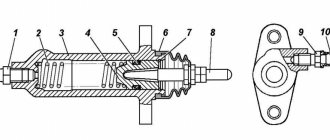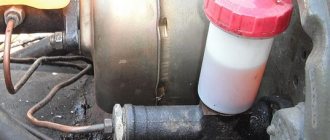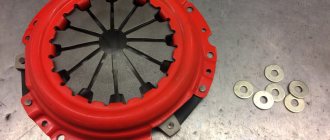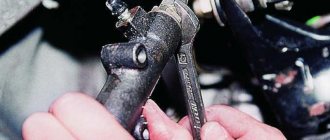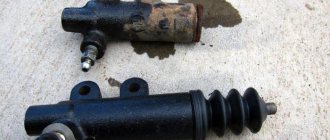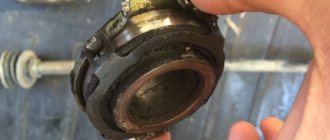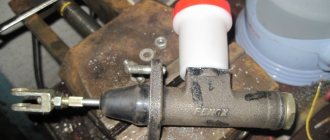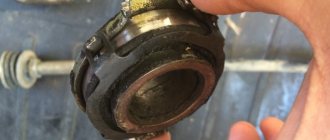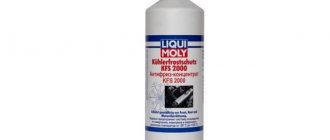How to change the clutch on a chainsaw?
Owners of chainsaws have probably wondered more than once: how to change the clutch on a chainsaw? On most chainsaw models, dismantling and replacing the clutch can easily be done manually by the owner; on a small number of models, unscrewing the drum can only be done in a workshop (such chainsaws include, for example, Husqvarna 137 or Partner 351).
In this review, we will learn how to independently remove and change the clutch on a chainsaw, when to do it and what tools you may need.
Chainsaw clutch
The wood processing device's clutch is centrifugal and operates automatically when the engine crankshaft speed changes. If the revolutions are small, then the elements of the mechanism are pressed against the shaft. This way the rotational motion is not transferred to the sprocket. As the speed increases, the elements move apart and are pressed against the drum, thus causing the chain to rotate.
A characteristic property of this type of device is braking when the chain slows down. This way you can avoid some breakdowns. But still, this system is subject to enormous load, so it is necessary to systematically carry out preventive inspection and repair.
How to remove
The drive sprocket also serves as a drum. One of the main reasons for the breakdown of this block is the grinding of the sprocket teeth. In a monolithic drum version, the chain can cut through the sprocket during operation. This mechanism requires replacement. If the drum has a replaceable crown, it must be removed and replaced during maintenance. After this, the drum can continue to function.
When the need for repairs arises, you need to seek help from a service center staffed by experienced specialists. But if there is no one nearby, the question arises - how to remove the clutch yourself? If you have the necessary set of tools, you can easily implement your plans. Of course, there are some differences in models from different companies, but the disassembly scheme remains the same:
- First, remove the chain brake cover by turning the lever. Lightly unscrew the nuts to release the tension on the chain. After loosening, you can completely unscrew the nuts and remove the cover;
- The chain and guide bar are disassembled, as well as the mechanism is cleaned of dirt;
- The cylinder head spark plug is turned out and the piston is fixed. To do this, the crankshaft must be rotated until the exhaust port is blocked, and then a piece of rope is placed in the cylinder to lock the piston. After completion of the work, the rope is removed from the mechanism;
- The nuts on the clutch are unscrewed using the special wrench included in the kit. In this mechanism they are made with a left-hand thread, and this must be taken into account when dismantling. After this, the mechanism is disassembled and all its parts are inspected for damage. Worn parts must be removed and replaced with new ones.
After repairs and replacement of parts, it is necessary to reassemble in the reverse order. The disassembly process is presented in more detail in the video.
In order to independently repair such chainsaws as Shtil, Husqvarna, Partner, Goodluck, you need to know some of the features of the models. For example, some types of saws have a washer installed (between the drive sprocket cup and the motor). During assembly, it must be installed in its original place.
If the model is equipped with a special spring that transmits rotation to the pump drive, then its correct installation after repair is extremely important. Otherwise, the device may be seriously damaged. After preventive and repair work, it is necessary to check whether the mechanisms are working properly.
When to remove the clutch
Disassembly of the clutch for the purpose of removal is carried out in the following cases:
- when the spring bursts (the chain turns, the engine runs intermittently);
- the spring flew off;
- a piece of the drum has broken off (in this case, noise will be heard and the chainsaw chain will also spin);
- temporary wear (it’s time to remove and change the clutch due to the end of its life).
Modern chainsaws operate on two-stroke engines, which are connected by a gearbox to the saw chain. The chain moves along the bar, and according to the centrifugal principle, idling should remain motionless, that is, be safe for the person holding the chainsaw.
If the load placed on the tool exceeds the recommended load, the clutch will weaken or completely stop transmitting torque to the tire. This will cause the engine to stop. When such situations occur, the clutch wears out and therefore needs to be replaced over time. In the operating instructions for chainsaws, some manufacturers have information that the clutch is a consumable part, that is, it must be periodically replaced.
Video - how to remove the clutch on a chainsaw:
Basic malfunctions and ways to eliminate them
When starting to repair a chainsaw, you need to have an idea of what malfunctions it may have, as well as how these malfunctions are eliminated. So, let's look at the signs of malfunctions and how to fix them.
Husqvarna chainsaw does not start
If the Husqvarna does not start, the first thing you need to make sure is that you follow the algorithm for starting the saw, as well as the presence of fuel in the tank. Detailed instructions on how to start a cold chainsaw and refuel it are available in the saw manual that comes with all Husqvarna chainsaws.
If you do everything correctly, but the saw does not respond, the reason may be a malfunction of the ignition system or lack of fuel supply.
To more accurately determine the reasons for this behavior of the chainsaw, it is necessary to inspect the spark plug, and then check it for the presence of a spark.
If the spark plug is wet and no spark is detected when checking, you should try replacing the spark plug itself. The replacement did not produce results, which means the problem may be hidden in the ignition coil, which is quite difficult to check on your own.
You can check the serviceability of the coil by installing it on a previously working saw of a similar model or by replacing the part with a working one.
If there is a spark, but the spark plug is dry, there is a problem in the fuel system. To eliminate it, you need to carry out a full diagnosis. The fuel system consists of a carburetor and a fuel line. Without any specific experience, you can check the fuel line for ruptures, as well as the cleanliness of the fuel filter installed in the tank. It is better to entrust complete carburetor diagnostics and repairs to professionals.
If the saw starts, but poorly
The cause of difficulty starting the saw may be a malfunction or incorrect adjustment of the carburetor. If the carburetor overflows, the chainsaw will be easy to start when hot, but quite difficult when cold, especially after a long period of inactivity.
An indirect sign of an excessive amount of fuel mixture entering the cylinder when the chainsaw is operating is the exhaust. If a lot of white smoke is emitted when the chainsaw is running, it is worth checking the proportions of the fuel mixture and carburetor adjustments.
Chainsaw chain spins at idle speed
If the Husqvarna chain rotates at idle, then we can conclude that there is a malfunction in the clutch mechanism or the idle speed is not adjusted. To eliminate the malfunction, it is necessary to remove the saw chain brake cover and inspect the integrity of the clutch spring. Replace defective clutch.
If the clutch is working properly, to eliminate chain spinning, it is necessary to adjust the idle speed using the adjusting screw marked with the letter (T) or carry out a full carburetor adjustment.
Important: a possible reason for an independent increase in idle speed is the appearance of air leaks into the engine crankcase or carburetor, which can lead to serious damage to the CPG.
Why does the Husqvarna chainsaw stall when you press the gas?
If the saw stalls immediately after pressing the gas, it is necessary to inspect the spark plug, which will help more accurately diagnose the problem. A wet spark plug indicates a malfunction or incorrect adjustment of the carburetor; in this case, the situation can be corrected by carrying out a complete diagnosis, repair and adjustment of this unit. If repairs and adjustments do not help, you need to replace the carburetor with a new one.
Another reason why a Husqvarna may stall when you press the gas is a malfunction in the fuel system, or more precisely, difficulty in supplying fuel to the carburetor. It is necessary to check the cleanliness of the fuel filter, as well as the integrity of the fuel hoses.
During the process of assembling the chainsaw during its complete repair, you can pinch the fuel hose coming from the tank to the carburetor, which will limit or completely stop the fuel supply and make the saw impossible to operate.
Repair kit, necessary tools
In order to remove, disassemble or adjust the clutch, we need the following tools:
- puller (supplied with some chainsaws);
- universal key (included with any chainsaw, also sold separately in hardware stores);
- flat screwdriver;
- piston stopper or simple rope to secure the piston;
- new parts to replace (drum, spring, etc.).
Disassembling the chainsaw clutch:
How to remove the clutch from a chainsaw and put it in place?
Scheme of the process of removing the clutch from a chainsaw (for example, let’s take a situation where it is necessary to replace the drum):
- remove the saw set using a universal key;
- remove the chain and bar;
- unscrew the air filter cover;
- Next we unscrew the candle;
- fix the piston with a stopper or rope;
- remove the clutch using a drift (puller) or a universal key for removing the clutch;
- remove the clutch by unscrewing it clockwise;
- remove and replace the drum.
After the steps described above, the entire assembly is carried out in the reverse order.
Meaning and design of the clutch
All latest generation chainsaws are equipped with a centrifugal clutch mechanism. The clutch transmits torque from the crankshaft of the tool engine to the saw set. The element operates exclusively in automatic mode, which prevents excessive stress on the internal combustion engine. Main clutch elements:
- Drum . It may have a removable or non-removable sprocket and is a transmission mechanism.
- Friction linings (counterweights). They move under the influence of centrifugal force, there is always a smooth connection with the drum part.
- Springs . They provide a tight seal to the crankshaft. Figure 1 – Clutch device
After the chainsaw starts, the crankshaft begins to move. A coupling is attached to it, from which the drive sprocket of the chain departs. When operating in idle mode, the friction linings are clamped, thanks to which torque is not transmitted to the drum. After increasing the speed, they move and drive the rotating sprocket.
Important ! In professional models, a drum with non-removable sprockets is installed. This increases its wear resistance, but increases the cost of repairs.
How to adjust the chainsaw clutch?
How to adjust the clutch on a chainsaw? It is more correct to talk about repairs, since the carburetor is usually subject to adjustment, not the clutch. When we talk about adjusting the clutch, it is important to consider two nuances:
- chainsaws of some models, including German, Finnish, Swedish, have a special washer; it can be located between the motor and the sprocket or between the drum and the sprocket. This washer must be carefully removed and then put back; if replaced, replace it with an identical one;
- the spring cannot be compressed, therefore, if it breaks, the part is considered damaged and is replaced with a new one. The absence of a working spring will result in a lack of lubricant supply to the chain.
Clutch repair: technological nuances
When servicing your clutch you should know that:
- Several saws have a washer that is located between the sprocket and clutch, as well as the sprocket and motor. Keep this in mind when renovating;
- The special oil pump drive spring must not be damaged during disassembly and must also return to its original position. Otherwise, the chain will not receive enough oil or will no longer be lubricated.
The repaired tool must be checked for the reliability of the tightening bolts, the oil supply to the chain and the good condition of the engine (it should turn on smoothly and run smoothly). Only then can he work.
Source
How to Tighten the Clutch on a Chainsaw
1) Chainsaw malfunction : the chain rotates almost constantly (the engine may not work stably). Causes of Failure: The clutch spring is broken. Repairing your own chainsaw: Replace the breakaway clutch spring with a new one (see “How to remove a chainsaw clutch” section below for more details). Huskvarna chainsaws have one clutch spring and two scales, quiet chainsaws have three clutch springs and three scales (cam, sectors). If you can't find the clutch spring itself, you'll need to replace the entire clutch.
2) Chainsaw error: the chain rotates almost constantly, sometimes extraneous sounds are heard in the clutch. Causes Malfunction: The clutch cam coil has broken (due to overheating) and the clutch spring has flown off. Blue clutch cams indicate overheating. Even if the clutch breaks, overheating can occur if you are using a chainsaw with a chain or a silent chain. Repair Homemade chainsaws: Replace the clutch assembly (see "How to remove a chainsaw clutch" section below).
3) Chainsaw malfunction: the clutch often “slips”, sometimes spring breaks. Causes of Malfunction: wear of the chainsaw chain. repair : replace the chainsaw clutch assembly.
How to remove the clutch from a chainsaw |
How to increase the working life of the coupling?
To avoid unplanned repairs, the gas saw operator needs to adhere to certain recommendations. They will help extend the life of the chainsaw clutch and protect it from damage to the main operating elements.
These recommendations include:
- regular lubrication of coupling parts;
- timely cleaning of the mechanism from dust and dried oil;
- operate the chainsaw only with a fully serviceable bar and a high-quality sharpened chain;
- avoiding contact of the installed cutting set with hard metal objects.
Increased wear on the chainsaw clutch occurs due to an incorrectly installed brake lever. To avoid further damage, the operator must constantly check the lever to ensure that the chain does not rotate while the overrun brake is applied.
Video: How to Tighten the Clutch on a Chainsaw
1. To remove the clutch on a chainsaw, you first need to remove the cutting attachment, then the air filter cover and the clutch cover.
2. Then you need to stop the crankshaft so that it does not rotate when the clutch is loosened. For example, to secure the crankshaft with a large wrench, for example, remove the recoil starter cover and screw two bolts into the ignition rotor. Or unscrew the spark plug, lower the piston into the BDC and secure it there by inserting a cable into the spark plug hole.
3. Then unscrew the coupling itself. Using a chainsaw wrench, or a Bulgarian disk wrench, or a homemade wrench (such as an old two-bolt tire), unscrew the clutch clockwise (there is a left-hand thread) to remove significant force.
4. Then remove the drive sprocket from the chainsaw. The rule for replacing a chainsaw clutch drum is: replace two tires. replace one drum.
Remove and replace the coupling yourself according to the instructions
Not many sawmills know how to remove the chainsaw clutch. The design of the mechanisms on different models of chainsaws is different, but the principle of operation is the same everywhere. The disassembly procedure is also almost the same, so next we will look at how to unscrew the clutch on a chainsaw with an internal sprocket.
First you need to prepare the necessary tools:
- The special key is called a stripper. This often comes with a chainsaw.
- Screwdriver for unscrewing the screws securing the protective cover
- Wrench. used to unscrew the cap and secure the tire (supplied with the tool)
- Rope. choke the crankshaft. It is better to use asbestos, but any will do. A rope is used if the tool does not have a special piston locking key.
If disassembly is performed for replacement, then you need to prepare a new mechanism in advance. When purchasing a new coupling, you only need to know the exact brand of chainsaw, since the devices differ in outer diameter, thread and design of the working mechanism. The instructions for removing the clutch on a chainsaw are as follows:
- First you need to unscrew the nuts securing the casing and tires
- Remove the cover from the handbrake, chain and bar.
- Then proceed to remove the plastic cover to get to the spark plug. To do this, unscrew the screwdriver and remove the cover along with the air filter.
- The chainsaw spark plug is unscrewed with a spark plug key
- Insert the cable into the spark plug hole in the cylinder (install a special key, if available). This is done in order to dampen the crankshaft. If the diameter of the rope is several times smaller than the size of the hole for the candle, knots can be made on it
- Next, move on to the clutch screwdriver. To do this, take a special key that must be turned on. If you don't have a wrench, you can use a tool from an angle grinder or make your own puller, which is also not difficult
- The key veneers must be installed in the coupling holes and then continue to rotate the part. You need to rotate clockwise. Manufacturers usually indicate unscrewing instructions in the form of an arrow.
- As the clutch rotates, the piston reaches top dead center and the crankshaft locks. Then, applying a little force, the clutch will come off with further unscrewing of the mechanism
- The twisted coupling is removed from the chainsaw. If necessary, the drum with the sprocket is also removed.
READ What Oil to Put in a Chainsaw Partner
The procedure is not complicated and does not take much time. Assembly is carried out in the reverse order of removal. To avoid any malfunctions, it is recommended to install exactly the same clutch on the corresponding tool model.
Replacing the clutch on a chainsaw
Chainsaws, for various reasons, need repairs from time to time. Of course, you can contact a service workshop or an experienced mechanic. However, many problems can be fixed at home with only a minimal set of skills and tools.
Answering the question of how to remove the clutch from a chainsaw, we note that this is not a difficult operation if you strictly adhere to the disassembly technology. Owners of the tool may encounter certain difficulties if the chainsaw has been in use for a long time and the clutch parts have become stuck to each other. However, even in this case, you can disassemble it yourself.
Why does the clutch basket play?
Basket play is possible for 2 main reasons.
- The thread on the shaft is broken, the shaft journal or the internal mounting hole on the coupling itself is broken. In such cases, the entire basket plays (dangles, sways) relative to the landing shaft. The shaft is motionless (does not play).
- The crankshaft bearing broke and play appeared on the landing shaft itself. In this case, the basket itself remains motionless relative to the shaft.
In all such cases, except one, a major overhaul of the engine is required with complete disassembly, replacement of the bearing or the entire crankshaft. An exception is the case when the landing shaft, bearing, crankshaft, thread are in good condition, but the parts of the assembly are broken, worn out or worn out. In this case, repair of the crankshaft and bearing with complete disassembly of the engine is not required. Only the clutch parts or the entire basket are replaced.
Clutch faults
| Malfunction | Possible reason | Remedy |
| The chain spins without stopping, with any carburetor adjustments. The engine is running erratically. | The spring in the drum burst. | Remove the spring and replace it with a new one, or install a new unit. |
| The chain rotates almost constantly, making strange sounds. | Cam chip. |
| Replacing the entire assembly | ||
| During operation, the chain slips. | Clutch wear | Replacing the unit |

